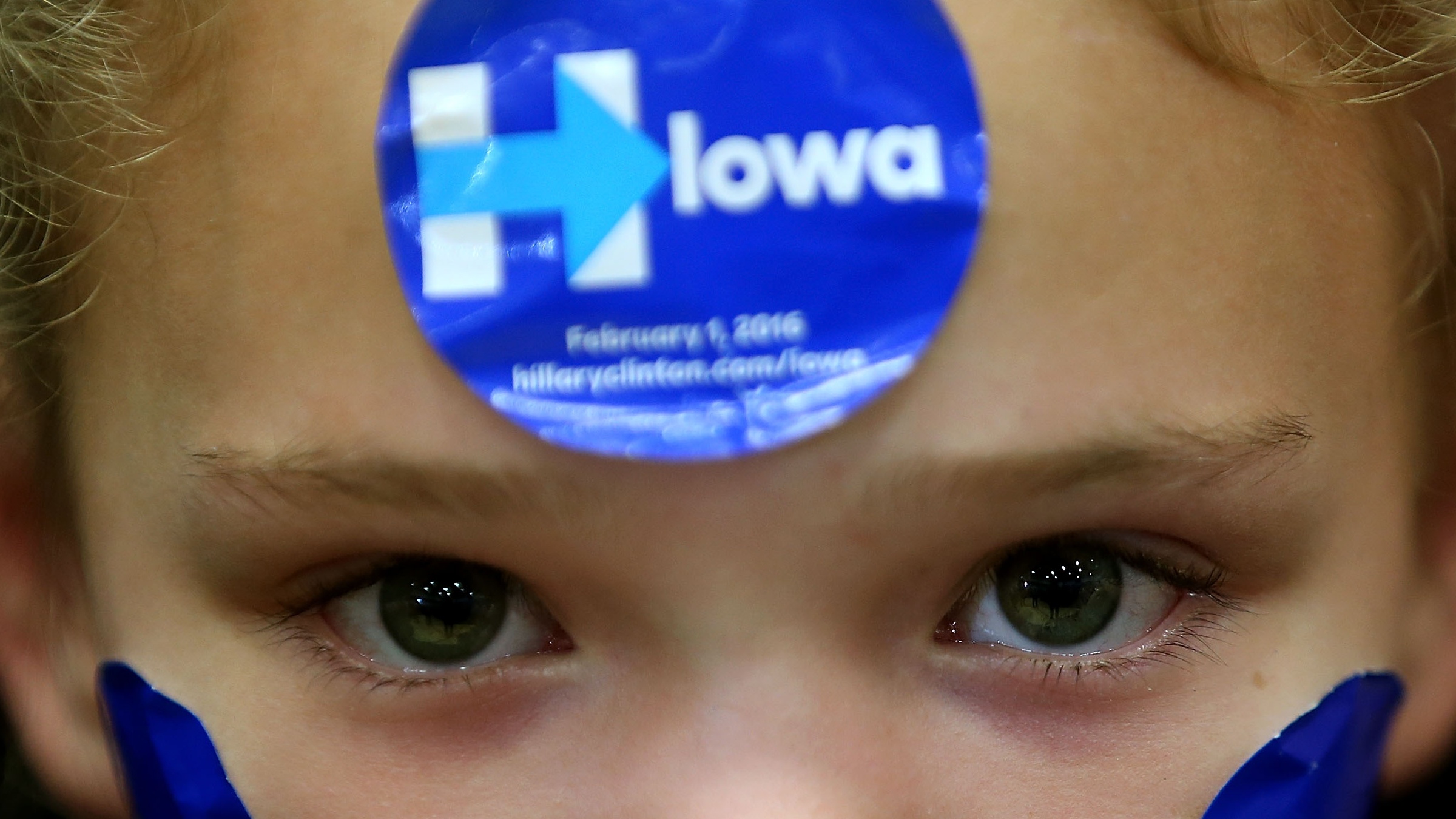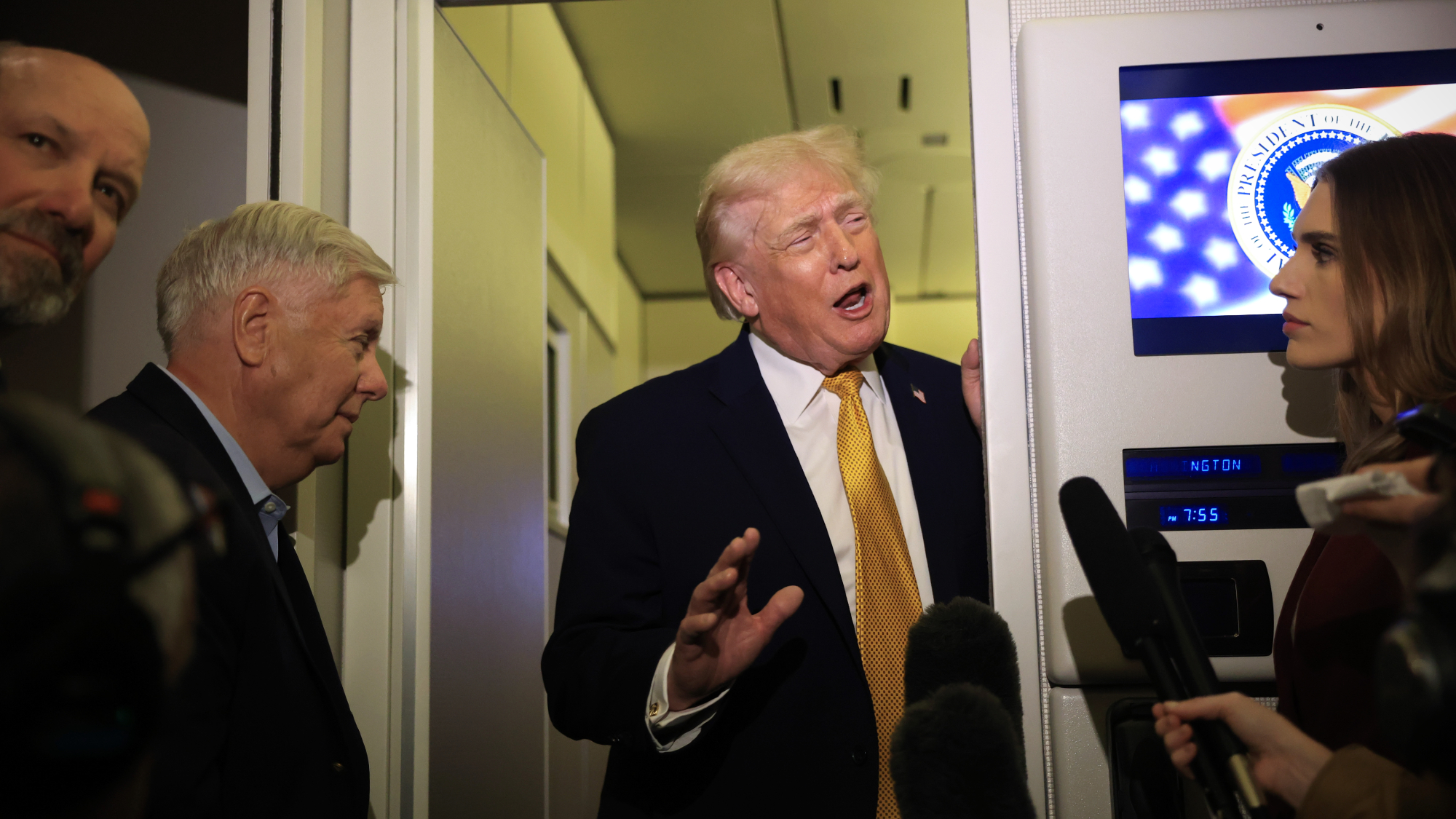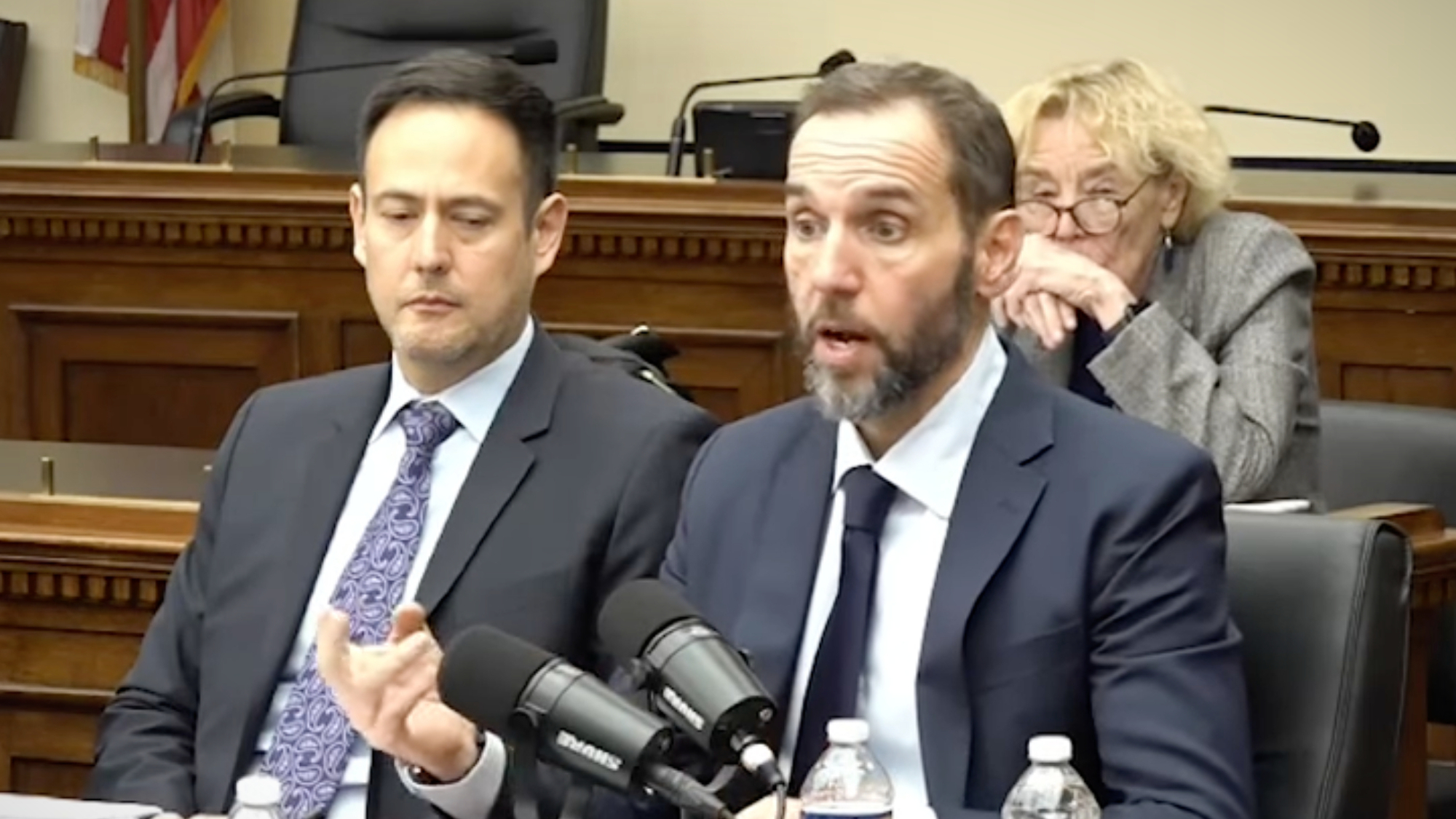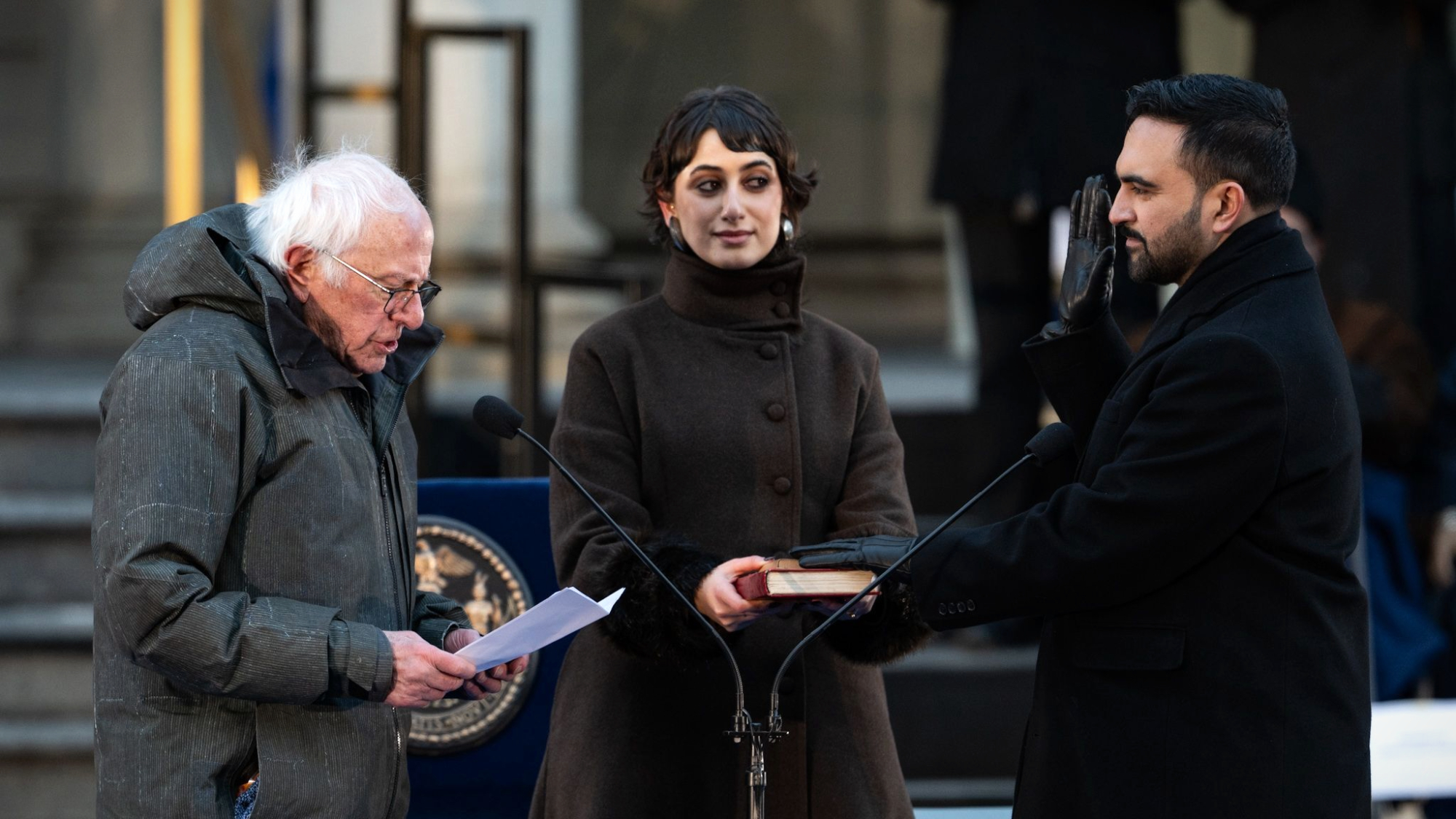How the US presidential primaries and caucuses work
Iowa is the first state to choose its candidates in the 2020 White House race

The Iowa caucuses take place today, kicking off the process of nominating a Democratic presidential candidate who will take on Donald Trump in November’s US election.
The nomination race is made up of a series of votes called primaries and caucuses, which take place in all 50 states plus Washington DC and outlying territories.
After the voting and counting is complete, parties will have selected their presidential nominees from the candidates who are running.
The Week
Escape your echo chamber. Get the facts behind the news, plus analysis from multiple perspectives.

Sign up for The Week's Free Newsletters
From our morning news briefing to a weekly Good News Newsletter, get the best of The Week delivered directly to your inbox.
From our morning news briefing to a weekly Good News Newsletter, get the best of The Week delivered directly to your inbox.
What is the voting all about?
In the UK, parties elect a leader internally, who is an MP, but will become the prime minister if their party wins the most seats in the House of Commons in a general election.
America, however, works under a presidential system, where the race for the White House is not contingent on the amount of seats a presidential candidate’s party wins in Congress.
This is why – for example, during the last two years of Barack Obama’s presidency – it is possible to have a Democrat president with a Republican majority in Congress.
A free daily email with the biggest news stories of the day – and the best features from TheWeek.com
Because the parties do not elect a leader themselves, they use primaries and caucuses to choose the party’s presidential candidate.
What is a primary?
A primary is an election held across a US state to pick a party’s nominee to run for office (in this case, the presidency). Voters pick their candidate in a secret ballot.
As the BBC reports, there are different types of primary. An “open primary” is open to all registered voters in that state, and they can vote for any candidate. “A Republican voter can vote in the state’s Democratic primary, and vice-versa,” the broadcaster notes.
The alternative is a “closed primary”, where only registered voters affiliated with each party in that state can vote. So, for example, only members of the Democratic Party could vote for the party’s candidate.
How does a caucus differ?
“Generally, primaries are open to more voters – they’re held across the state, while caucuses are held in one place at a particular time, and are open only to party members,” the BBC reports.
Caucuses used to be far more popular than primaries as a means of choosing a candidate, but are not used as often now.
Al Jazeera describes caucuses as “small private gatherings in churches, schools, libraries or even members’ private homes”.
Unlike in a secret ballot, members openly express their preference for one candidate over another, but they have been criticised for excluding “marginal voices and favour[ing] only the most engaged and informed voters”.
Tonight’s vote in Iowa is a caucus, not a primary.
How does voting work?
The goal in these contests is for candidates to amass support from voters that translates into delegates at the party conventions, which take place in July and August. Delegates here then nominate presidential candidates.
In a primary, voting works the same as in a normal election, with a private booth for voters to tick a box on a ballot paper.
This is not how a caucus - for example tonight in Iowa - works.
Instead, as The Guardian reports, “a representative for each candidate will be standing in a certain area of the room”. So, for example, there will be a Joe Biden area, a Bernie Sanders area, an Elizabeth Warren area and so on.
“Voters have to go and stand in the area where their candidate is represented,” the newspaper adds.
If a candidate does not win 15% of the vote, they are removed from the process and their supporters can recast their vote and move to another part of the room. So, for example, a moderate Pete Buttigieg supporter could see their candidate booted out of the voting, but could then vote for another moderate, like Biden.
The votes are totted up, and state delegates are awarded to each candidate. That then decides how many national convention delegates each candidate has.
What can we learn from Iowa?
The Iowa caucus kicks off the voting on who the candidates for each party should be.
There are only three candidates challenging President Trump for the Republican nomination and none has a real chance of beating him, so instead all eyes are on the Democrats’ race.
As Reuters notes, “in the grand scheme of things”, Iowa’s relatively small size means they have “little influence over the final delegate count for the Democratic nominee”.
Iowa has just 41 delegates and 1,991 are needed for a candidate to secure the nomination. For context, Texas has 228 and California has 415.
But, the news agency adds, “Iowa exerts outsized influence by going first” as traditionally the field narrows to three or four favourites after Iowa. There are currently 11 candidates in the Democratic field.
This influence is evidenced by the fact that the winner of the Iowa caucuses has gone on to be the party’s nominee in the past five Democratic primaries.
Bernie Sanders is currently the favourite to win in Iowa, with odds of 4/7. Joe Biden is second at 9/4, with Pete Buttigieg (7/1) and Elizabeth Warren (10/1) in third and fourth respectively.
What happens after Iowa?
After Iowa, the next big vote to look out for is New Hampshire on 11 February.
As New Hampshire is a primary, with a secret ballot, it is seen as a key indicator of the candidates’ popularity. The then New Hampshire Governor John H. Sununu alluded to this in 1988 when he said: “The people of Iowa pick corn, the people of New Hampshire pick presidents.”
In 2016, Sanders won the New Hampshire primary with 60% of the vote, with future presidential candidate Hillary Clinton coming second.
After New Hampshire, the next big date for your diary is “Super Tuesday” on 3 March.
On this date, Alabama, Arkansas, California, Colorado, Georgia, Massachusetts, Minnesota, North Carolina, Oklahoma, Tennessee, Texas, Vermont and Virginia all hold their primaries.
The Democratic National Convention then takes place four months later from 13-16 July. The Republican convention, which is likely to be a formal crowning for President Trump, is from 24-27 August.
The presidential election date is 3 November.
-
 Venezuela’s Trump-shaped power vacuum
Venezuela’s Trump-shaped power vacuumIN THE SPOTLIGHT The American abduction of Venezuelan President Nicolás Maduro has thrust South America’s biggest oil-producing state into uncharted geopolitical waters
-
 Most data centers are being built in the wrong climate
Most data centers are being built in the wrong climateThe explainer Data centers require substantial water and energy. But certain locations are more strained than others, mainly due to rising temperatures.
-
 ‘Maps are the ideal metaphor for our models of what the world might be’
‘Maps are the ideal metaphor for our models of what the world might be’Instant Opinion Opinion, comment and editorials of the day
-
 Venezuela’s Trump-shaped power vacuum
Venezuela’s Trump-shaped power vacuumIN THE SPOTLIGHT The American abduction of Venezuelan President Nicolás Maduro has thrust South America’s biggest oil-producing state into uncharted geopolitical waters
-
 Trump says US ‘in charge’ of Venezuela after Maduro grab
Trump says US ‘in charge’ of Venezuela after Maduro grabSpeed Read The American president claims the US will ‘run’ Venezuela for an unspecified amount of time, contradicting a statement from Secretary of State Marco Rubio
-
 ‘Let 2026 be a year of reckoning’
‘Let 2026 be a year of reckoning’Instant Opinion Opinion, comment and editorials of the day
-
 Jack Smith: Trump ‘caused’ Jan. 6 riot
Jack Smith: Trump ‘caused’ Jan. 6 riotSpeed Read
-
 Mamdani vows big changes as New York’s new mayor
Mamdani vows big changes as New York’s new mayorSpeed Read
-
 Wave of cancellations prompts Kennedy Center turmoil
Wave of cancellations prompts Kennedy Center turmoilIN THE SPOTLIGHT Accusations and allegations fly as artists begin backing off their regularly scheduled appearances
-
 Trump considers giving Ukraine a security guarantee
Trump considers giving Ukraine a security guaranteeTalking Points Zelenskyy says it is a requirement for peace. Will Putin go along?
-
 Why is Trump’s alleged strike on Venezuela shrouded in so much secrecy?
Why is Trump’s alleged strike on Venezuela shrouded in so much secrecy?TODAY'S BIG QUESTION Trump’s comments have raised more questions than answers about what his administration is doing in the Southern Hemisphere